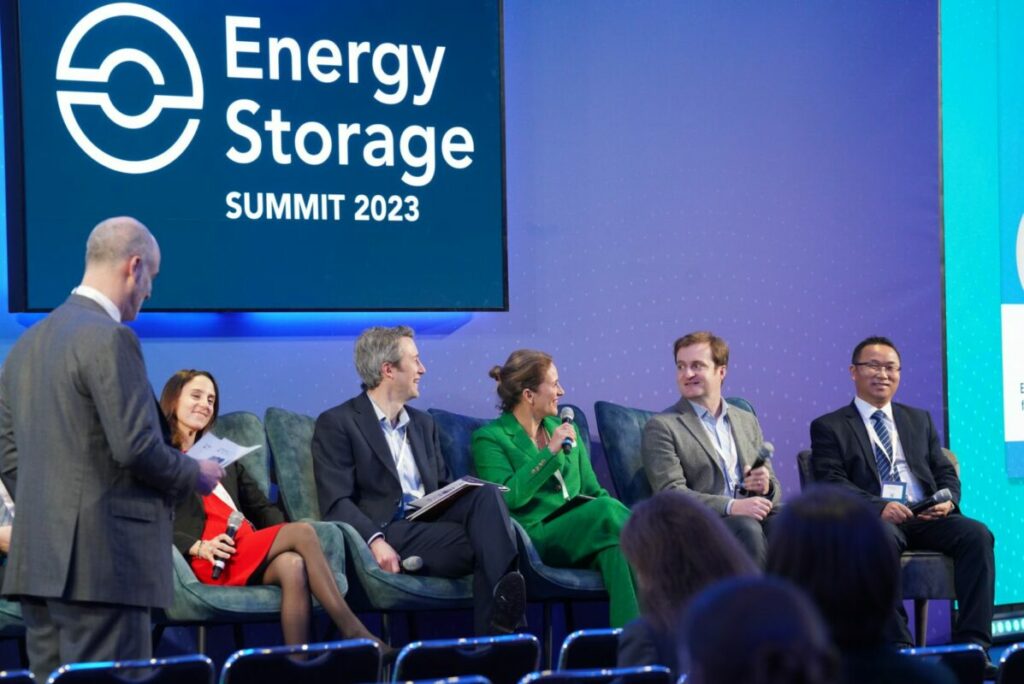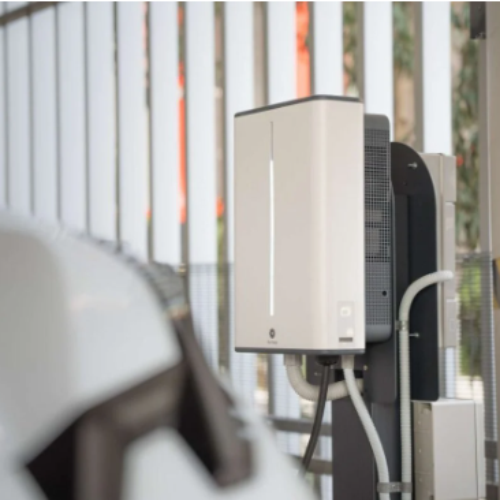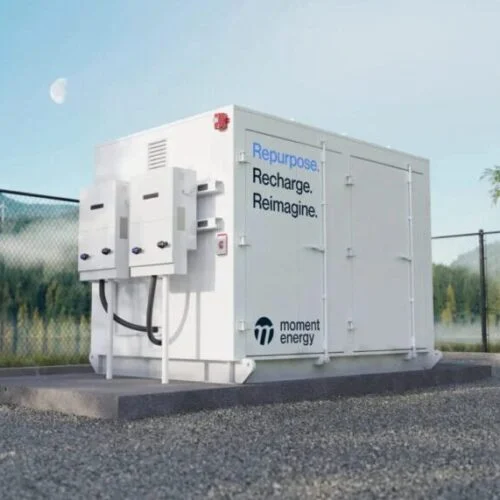Current± – along with its sister site Energy-Storage.news – is back at the at Solar Media’s Energy Storage Summit 2023 for the second day, finding out about the investment opportunities for storage, the growing flexibility markets, how storage can help tackle grid connection constraints and much more.
Follow the biggest news and best comments from the summit, in our rolling coverage here.
Co-located projects must be tackled with asset optimisation

Batteries being the “buzzword in the industry” is encouraging further co-located projects, the panelists said during Debating Investing in Co-Located Projects at the Energy Storage Summit.
But often this leads to development at different paces, limiting the ability to maximise the potential of the asset.
Lots of large-scale solar is having a battery element added “because it is trendy” suggested Paul Mason, chief investment officer at Harmony Energy.
To truly maximise the potential of co-located sites, they must be treated as a singular asset, and take an asset optimisation approach added Dr Marc Thomas, managing director at Noriker Power.
But irregardless of the challenges currently, as sites for wind and solar generation gets more limited, the sector will “keep evolving” said John Pollard, investment manager at NTR. As such, we’ll start to see more and more hybrid projects with solar, storage, wind and maybe additional elements like hydrogen.
Energy security strategy not following market’s vision for renewables

The UK is moving closer to a decarbonised energy storage system, which is likely to be dominated by wind and solar, in order for this structure to be reliable we will need an efficient energy storage system. How the UK Government can support this was the topic of today’s keynote opening panel at Solar Media’s Energy Storage Summit 2023.
Although the energy security strategy is a “useful first step” to achieving a decarbonised renewable system said Chris Hewett, CEO at Solar Energy UK, “I don’t think the energy strategy yet follows that vision. That’s where the market is going, but government headline targets seem to be going in a slightly different direction.”
Discussing what support is required to tackle growth barriers for battery storage, the panel highlighted a number of suggestions.
Richard Cave-Bigley, managing director for solar and storage at SSE suggested a more long-term mentality for government policies concerning storage:
“It’s fair to say that in the UK, in terms of government policy, priority investments and targets are relatively short term, but I think Chris Skidmore’s suggestion [in the Net Zero Review], of pushing those programmes out to a ten year horizon with a fully integrated set of programmes, would help greatly.”
Changing market place criteria to enable the growth of renewables in the same dynamic in which oil and gas has been allowed to, was also brought up by the panel.
“There is investment in storage, the money’s there. It’s the criteria of marketplace that needs to expand to make sure that you can replace natural gas with long duration energy storage,” said Julia Souder, executive director at the Long Duration Energy Storage Council.
“Long term batteries combined with wind and solar can provide the same ancillary services as natural gas, so it’s really the market criteria which needs changing. But what’s exciting is that yes, there is an investment. We just need the criteria to change today so that we can have this for tomorrow.”
Members of the panel also questioned the direction of some governmental decisions and policies including gas being exempt from the electricity generator levy and the capacity market yesterday giving a contract to a new combined-cycle gas turbine.
In response, head of electricity storage for the newly-formed Department for Energy Security and Net Zero, Matt Alderidge said:
“To the point of markets. Absolutely. We hear you loud and clear. We have a call for evidence of long duration storage way before REMA, which in itself is a hug opportunity for energy and storage.”
“And just to address Government targets, we fully accept that we have these grand ambitions on the generation end. It gets more complex when it comes to storage because what we want to do to build the right amount of storage in balance with other things such as demand cycle support.”
It’s all about allowing the market to bring forward exactly what works and don’t over build.”
Welcome to Day 2! Our first session of the day ‘How Can the UK Achieve Energy Independence for the Future Market?’ Thanks to our speakers #BEIS #SSE #EASE #EnergyTransitionsCommission @SolarEnergyUK_ @SunwodaE #LongDurationEnergyStorageCouncil #StorageSummit pic.twitter.com/RAhIkof9ZP
— Solar Energy Events (@_SolarEnergy) February 23, 2023
The ‘best way to predict the future is to invent it’

“The best way to predict the future is to invent it,” said Andy Hadland, head of technologies, EMEA at Eko Energy in response to what opportunities may emerge in the energy storage market in the future.
Hadland believes with the way the market is currently developing, it is almost impossible to predict what will become the next market trend in the energy storage industry. This perspective is reinforced by James Mills, managing director of Adatogen Capital said: “We can’t possibly know what the opportunities will be in five years but I’m sure it will be changeable and diverse.”
Mills also believes that much like Hadland, it’s incredibly difficult to predict future trends – a theme in many panellists comments at the Energy Storage Summit, given the colossal amount of change seen in the industry in recent years.
However, what remains a vital discussion point is the need to reform the energy market in the UK to ensure these technologies are able to connect to the grid. Rosalind Smith-Maxwell, vice president of Quinbrook Infrastructure Partners highlighted this issue and referenced a need to reform the market.
“The current rate of change and projects being connected can’t be accommodated with the current market we have,” she said.
Once this has been connected, what will the revenue stream for green energy look like? Smith-Maxwell hopes that companies will “pay a premium” for the green energy to incentivise investment in the sector.






